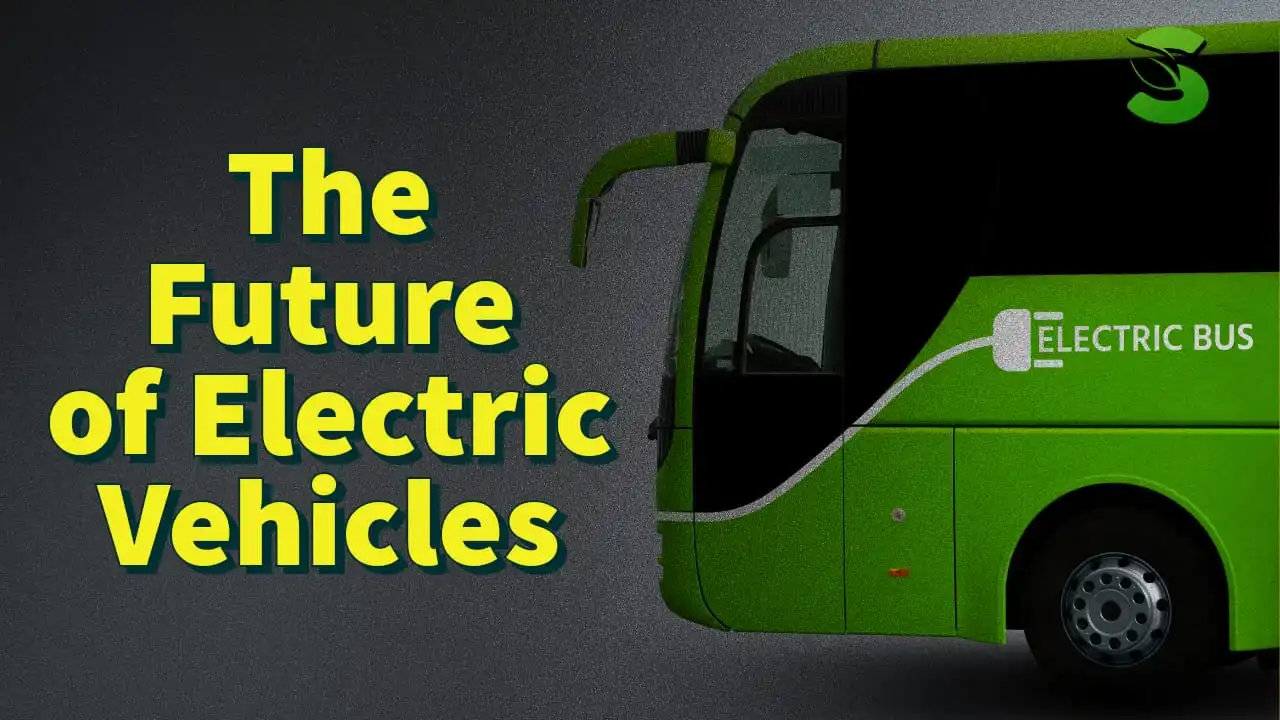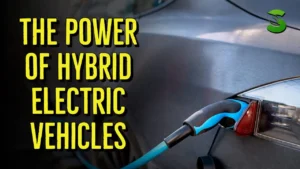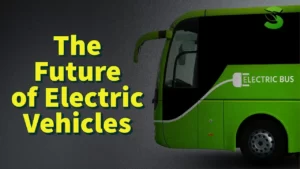The rumble of gasoline engines is fading into the distance, replaced by the smooth hum of a new era. Electric vehicles (EVs) are no longer a futuristic fantasy, but a tangible reality taking the automotive world by storm. Fueled by a potent cocktail of technological breakthroughs, environmental concerns, and shifting consumer preferences, EVs are rapidly transforming how we travel, offering a glimpse into a future where clean air and sustainable mobility reign supreme. This article embarks on a thrilling journey into the electrifying world of EVs, exploring their undeniable advantages, their profound environmental impact, and the cutting-edge advancements propelling them to the forefront of the automotive revolution. Buckle up, because the road ahead is paved with innovation and promises a ride towards a cleaner, greener horizon.
The Rise of Electric Vehicles: Rolling Towards a Greener Future
Gone are the days when electric vehicles (EVs) were mere futuristic prototypes. They’re surging onto roads worldwide, their silent hum a testament to a transportation revolution in the making. This rise is propelled by a potent mix of environmental concerns, technological advancements, and shifting consumer preferences.
Riding the Green Wave: At the heart of the EV boom lies their undeniable environmental benefit. Unlike their gasoline-powered counterparts, EV produce zero tailpipe emissions, a crucial step in tackling climate change and air pollution. In a world suffocating under smog and facing the dire consequences of greenhouse gases, EV offer a breath of fresh air, literally and figuratively.
Fueled by Incentives: Governments worldwide are recognizing the potential of EVs and are actively pushing for their adoption through generous incentives. From tax breaks and purchase subsidies to investments in charging infrastructure, these policies are making EVs increasingly cost-competitive with gasoline cars. The European Union, for example, has set ambitious targets for EV sales, while China, the world’s largest car market, continues to offer substantial subsidies to EV buyers.
Cost Crunch: Technology isn’t standing still. Battery costs, once a major roadblock for EV adoption, are plummeting thanks to innovations in materials and manufacturing processes. This translates to longer driving ranges and more affordable EVs, making them accessible to a wider range of consumers.
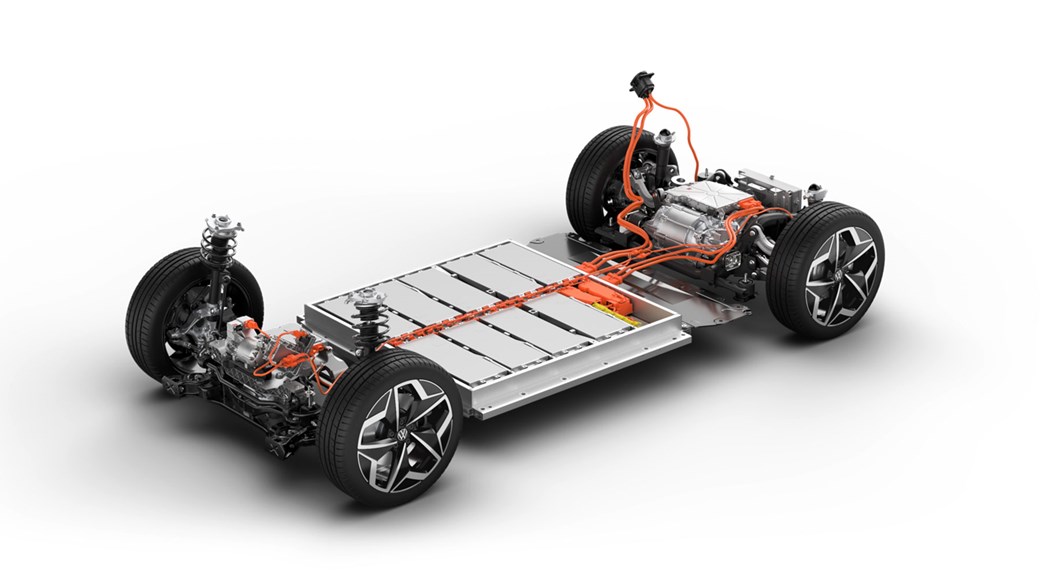
Lithium batteries for electric vehicles
Plugged In and Ready to Go: Range anxiety, the fear of running out of power before reaching your destination, is also fading into the rearview mirror. Charging infrastructure is rapidly expanding, with charging stations popping up along highways, in cities, and even in homes. This web of power is making EVs a viable option for longer journeys, further eroding anxieties and fueling their rise.
Beyond Carbon-Free Cruising: The benefits of EVs extend beyond tailpipe emissions. Their quieter operation reduces noise pollution, creating more peaceful neighborhoods and cities. Additionally, the shift to EVs paves the way for a cleaner and more sustainable energy future, reducing dependence on fossil fuels and their volatile prices.
The rise of EVs is just the beginning of a thrilling journey. In the next section, we’ll delve deeper into the cutting-edge advancements propelling this revolution, from next-generation batteries to the integration of autonomous driving technology. Stay tuned for a glimpse into a future where EVs not only clean the air but also redefine the way we travel.
Types of Electric Vehicles: A Guide to Different Electrified Rides
The electric vehicle (EV) landscape is far from monolithic. Like a colorful bouquet, it blooms with diverse options, each catering to different needs and preferences. To choose the perfect EV for your green ride, knowing your options is key. So, buckle up as we explore the three main types of EVs currently rolling out on the road:
1. Battery Electric Vehicles (BEVs): Pure Electric Pioneers
Imagine gliding through city streets with only the whisper of the wind. BEVs, the fully electric heroes of the EV world, offer just that. Powered solely by rechargeable batteries, these zero-emission champions produce no tailpipe fumes, making them the cleanest option on the road. Their silence adds to the charm, transforming commutes into peaceful journeys.
But BEVs don’t just win hearts with their environmental credentials. They offer impressive performance, with instant torque providing exhilarating acceleration and smooth, responsive rides. Battery technology is constantly evolving, offering ranges that are pushing closer and closer to traditional gasoline cars. Additionally, the charging infrastructure is steadily expanding, erasing anxieties about running out of juice.
However, BEVs aren’t for everyone. Initial purchase costs can still be higher than gasoline cars, and charging times, while decreasing, require planning. Additionally, their range, though improving, might not yet satisfy those who often embark on long road trips.
2. Plug-in Hybrid Electric Vehicles (PHEVs): The Bridge Between Worlds
Think of PHEVs as the diplomats of the EV world. They bridge the gap between gasoline and electric power, offering the best of both worlds. Like BEVs, they have a rechargeable battery and an electric motor, allowing for emissions-free driving over shorter distances. But unlike their fully electric cousins, PHEVs also boast a traditional gasoline engine that kicks in for longer journeys or when the battery depletes.
This hybrid approach offers several advantages. Firstly, PHEVs have extended ranges, alleviating range anxieties for those who travel far. Secondly, they offer the flexibility of using electric power for daily commutes and gasoline for weekend getaways. Additionally, some PHEVs can even function as mobile power sources, making them ideal for camping or emergency situations.
However, PHEVs have their limitations. Their batteries are typically smaller than those in BEVs, meaning their electric-only range is shorter. Additionally, they carry the weight of both an electric motor and a gasoline engine, impacting fuel efficiency and performance. Finally, their higher initial cost might deter some buyers.
3. Hybrid Electric Vehicles (HEVs): The Green Gateway
HEVs are the gentle introduction to the electrified world. Unlike BEVs and PHEVs, they cannot be plugged in. Their batteries are charged through regenerative braking, converting kinetic energy into electricity during deceleration. This electricity then assists the gasoline engine, improving fuel efficiency and reducing emissions compared to traditional gasoline cars.
HEVs offer several advantages. Their initial cost is typically lower than other electric options, making them a more accessible entry point to greener driving. Additionally, they require no charging infrastructure and have no range anxiety, as they primarily run on gasoline. Plus, their fuel efficiency improvements offer significant cost savings over time.
However, HEVs are not emission-free. While producing fewer emissions than traditional gasoline cars, they still rely on gasoline for most of their power. Additionally, their performance and acceleration might not be as exciting as their fully electric counterparts.
Choosing Your EV Partner
Navigating the EV landscape can be exciting, but choosing the right type requires careful consideration. Evaluate your driving needs, budget, and charging options. If you’re a dedicated city dweller with access to charging, a BEV might be your perfect match. For those who crave flexibility and extended range, a PHEV could be the answer. And if you’re looking for a greener entry point while keeping costs down, an HEV might be your first step towards a more sustainable future.
Remember, regardless of the type you choose, an EV offers a thrilling adventure towards a cleaner planet and a smoother, quieter ride. So, buckle up and embrace the electrifying future of transportation!
Breathing Easy: The Environmental Impact and Sustainability of Electric Vehicles
As concerns about climate change and air pollution intensify, the transportation sector stands at a crossroads. Electric vehicles (EVs) emerge as a beacon of hope, promising a path toward a cleaner and greener future. Their impact on the environment and sustainability deserves a closer look, revealing a story far richer than simply replacing gasoline engines.
Breaking Free from Fossil Fuels: The most dramatic shift EVs bring is their reduced reliance on fossil fuels. Unlike gasoline-powered vehicles that spew greenhouse gases with every mile, EVs boast zero tailpipe emissions. This translates to a significant reduction in carbon dioxide (CO2), the primary culprit behind climate change.

Fossil fuels spewing out carbon dioxide
Studies estimate that a single EV can save up to 1.5 million grams of CO2 per year compared to a gasoline car. This translates to reducing carbon footprints and mitigating the devastating effects of climate change. As more EVs take to the streets, the cumulative impact on our planet’s health will be profound.
Breathing Cleaner Air: Beyond fighting climate change, EVs directly improve air quality in our cities. Their absence of tailpipe emissions means no more choking fumes, smog, or harmful pollutants like nitrogen oxides and particulate matter. This translates to cleaner air for everyone, especially in urban areas often plagued by pollution.

City air pollution
The benefits are readily apparent. Cleaner air leads to a reduction in respiratory illnesses, cardiovascular diseases, and other health problems associated with air pollution. For children and the elderly, particularly vulnerable to such health issues, the shift to EVs offers a significant improvement in their lives.
Renewable Energy: Powering a Greener Future: The story of EV sustainability doesn’t end with zero tailpipe emissions. The source of energy used to charge EVs further amplifies their environmental impact. When fueled by renewable energy sources like solar, wind, or hydro power, EVs become truly clean machines.

Renewable energy sources like solar, wind, and hydro power
By tapping into renewable energy, EVs decouple transportation from the harmful environmental consequences of fossil fuel extraction and generation. This creates a virtuous cycle, where clean energy powers clean vehicles, further accelerating the transition towards a sustainable future.
Challenges and Opportunities: While the environmental benefits of EVs are undeniable, challenges remain. Battery production, although becoming increasingly sustainable, still requires the mining of raw materials which can have environmental and social implications. Additionally, the current reliance on electricity grids powered by fossil fuels in some regions means the full environmental impact of EVs may vary depending on location.
However, these challenges present opportunities for further innovation and progress. Investing in responsible battery production practices, diversifying energy sources, and expanding renewable energy infrastructure are crucial steps towards maximizing the environmental potential of EVs.
The Road Ahead: The journey towards a sustainable transportation future paved by EVs is already underway. Their environmental benefits, ranging from reduced carbon emissions to cleaner air, are driving their adoption globally. As technology advances, production practices become more responsible, and renewable energy infrastructure expands, EVs will only become cleaner and more sustainable.
By choosing an electric vehicle, you’re not just making a personal choice; you’re contributing to a collective effort to combat climate change, improve air quality, and pave the way for a greener future. So, buckle up, plug in, and join the EV revolution – it’s time to breathe easy and ride towards a cleaner planet.
Technological Advancements in Electric Vehicles
The electric vehicle (EV) revolution is not just about swapping engines; it’s a complete makeover of the transportation experience. Under the hood, a whirlwind of innovation is brewing, shaping the future of how we move, powered by technology that promises unparalleled convenience, sustainability, and even a touch of magic.
a) Battery Tech: The Powerhouse Reimagined
Battery technology, the lifeblood of EVs, is undergoing a metamorphosis. Gone are the days of hefty, range-anxious batteries. Scientists are conjuring up marvels like:
Solid-state batteries: Imagine saying goodbye to the liquid electrolytes that can be volatile and bulky. Solid-state batteries replace them with solid conductors, promising increased energy density, faster charging times, and enhanced safety. Picture zooming past gas stations with a battery that charges in minutes and lasts for hundreds of miles!

solidstate battery for electric vehicles
Lithium-sulfur batteries: These batteries boast the potential to hold five times the energy of current lithium-ion batteries, meaning even longer ranges and less frequent charging. Think road trips across continents without range anxiety!
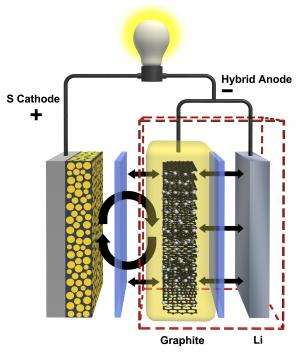
lithiumsulfur battery for electric vehicles
Silicon anodes: Replacing graphite with silicon in the anode allows for more lithium storage, boosting a battery’s capacity by up to 40%. Picture an EV zipping through the city with the power of a sports car, yet silent and emission-free.
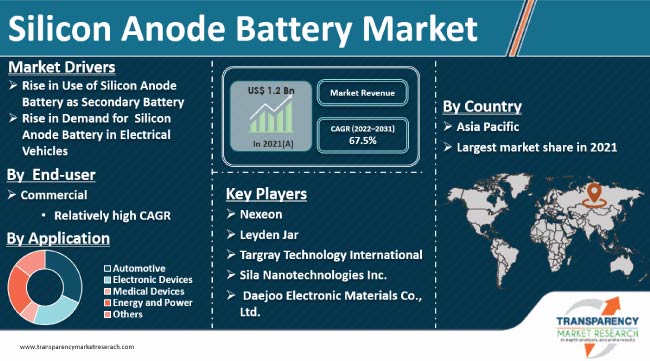
silicon anode battery for electric vehicles
b) Range Anxiety Dissolves: Plugging into a Brighter Future
Remember the fear of running out of juice in the middle of nowhere? Range anxiety, once a major roadblock for EV adoption, is rapidly fading into the rearview mirror. Here’s how:
- Charging infrastructure boom: Stations are popping up like mushrooms, dotting city streets, highways, and even homes. Imagine a future where finding a charger is as easy as finding a coffee shop!
- Faster charging speeds: Gone are the days of waiting hours for a full charge. Advancements in battery technology and charging protocols are slashing charging times to minutes, turning a once-tedious task into a quick coffee break.
- Smarter batteries: Imagine your EV intelligently managing its energy, optimizing charging times and even predicting your usage patterns. This is the promise of next-generation battery management systems, paving the way for even more efficient and worry-free driving.
c) Autonomous Driving: Taking the Wheel Out of the Equation
Advanced driver-assistance systems (ADAS) like lane departure warning and automatic emergency braking are already making our roads safer. But the future holds even more:
- Level 3 and 4 autonomy: Picture your car taking the wheel on highways, handling traffic jams, and even navigating city streets with ease. While Level 3 requires driver supervision, Level 4 allows for hands-free, eyes-free driving, opening up a world of possibilities for relaxation, productivity, or simply enjoying the scenery.
- Personalized driving profiles: Imagine your EV adapting to your driving style, preferences, and even mood. This isn’t just sci-fi; ADAS systems are learning to tailor the driving experience, from spirited cornering to smooth commuting, making every journey unique and enjoyable.
d) Connectivity and Smart Features: The Electric Symphony
EVs are becoming rolling hubs of connectivity, seamlessly integrating with our digital lives:
- Remote monitoring: Imagine checking your EV’s battery level, charging status, and even pre-heating the cabin from your phone. This is the power of remote connectivity, offering peace of mind and ultimate convenience.
- Over-the-air software updates: No more trips to the service center for software updates! EVs will receive patches and upgrades wirelessly, ensuring you’re always driving with the latest technology.
- Smart home integration: Imagine your EV seamlessly interacting with your smart home, pre-cooling your house on your way back or automatically adjusting the lights on arrival. This connected ecosystem promises a future of effortless comfort and efficiency.
e) Vehicle-to-Grid: EVs Sharing the Power
Imagine your EV not just consuming electricity, but also supplying it back to the grid during peak demand periods. This is the magic of Vehicle-to-Grid (V2G) technology, transforming EVs into mini power plants:
- Stabilizing the grid: EVs with V2G capabilities can act as batteries, soaking up excess energy during low demand and releasing it back to the
Bridging the Gap: Challenges and Solutions for a Thriving EV Future
While the EV revolution is in full swing, navigating the road ahead still requires tackling some bumps. Despite the undeniable benefits, challenges remain – but so do inspiring solutions. Let’s explore a few key hurdles and the innovative attempts to overcome them:
1. Cost Crunch: The Price Tag Hurdle
The initial cost of EV often presents a barrier for potential buyers. While battery prices are steadily decreasing, they still hold a higher price tag than their gasoline counterparts. This difference can be daunting, even with the long-term cost benefits of lower fuel and maintenance expenses.
Solutions:
- Government Incentives: Many countries offer generous tax breaks, purchase subsidies, and other incentives to incentivize EV adoption. These initiatives help bridge the initial cost gap and make EVs more attractive to a wider range of consumers.
- Financing Options: Creative financing options, such as leases with lower monthly payments, can make EVs more accessible, especially for budget-conscious consumers.
- Used EV Market: As the EV market matures, the used car market for EVs is also burgeoning. This provides a more affordable entry point for those who want to experience the joys of electric driving without the initial price shock.
2. Range Anxiety: Conquering the Fear of Running Out
Limited driving range, particularly compared to traditional gasoline vehicles, can be a source of anxiety for some potential EV buyers. The fear of running out of power before reaching your destination, especially on long journeys, can be a deterrent.
Solutions:
- Expanding Charging Infrastructure: The rapid expansion of charging stations across highways, cities, and even homes is alleviating range anxiety. Fast-charging technology is also evolving, allowing for quicker top-ups while on the go.
- Improved Battery Technology: Advancements in battery technology are increasing the range of EV steadily. Solid-state batteries and other innovations promise even more miles per charge in the near future.
- Range Planning Apps: Smart apps and onboard navigation systems can help drivers plan their journeys efficiently, factoring in available charging stations and real-time traffic conditions to ensure they reach their destination with confidence.
3. Plugged In or Left Out: Unequal Access to Charging
Limited access to reliable charging infrastructure remains a challenge, particularly in rural areas and for residents who rely on street parking. This can create an uneven playing field for EV adoption, potentially exacerbating existing transportation inequities.
Solutions:
- Public-Private Partnerships: Collaboration between governments and private companies can accelerate the deployment of charging stations in underserved areas. Innovative solutions like mobile charging trucks and solar-powered chargers are also emerging to overcome infrastructure limitations.
- Community-Based Charging: Initiatives that encourage apartment buildings, workplaces, and community centers to install charging infrastructure can make EVs more accessible to those without dedicated parking spaces.
- Creative Charging Options: Exploring alternative charging solutions like wireless charging pads at parking spots or even integrating charging capabilities into streetlights can expand access and convenience for EV users.
Beyond the Hurdles: A Brighter Future
Addressing these challenges head-on is crucial to ensuring a smooth and equitable transition to a greener transportation future. By combining innovative solutions with continued research and development, we can pave the way for a world where EVs are not just a niche option, but the mainstream choice for a cleaner, quieter, and more sustainable way to get around. As we navigate the bumps, remember that every challenge overcome brings us closer to a future where clean air, silent commutes, and a thriving EV ecosystem are not just a dream, but a reality rolling down the road towards us.
Frequently Asked Questions (FAQ) section for electric vehicles:
Q: What is an electric vehicle (EV)?
A: An electric vehicle, also known as an EV, is a vehicle that is powered by one or more electric motors. Instead of using internal combustion engines that run on gasoline or diesel, EVs use electricity stored in rechargeable batteries or other energy storage devices to power the motor.
Q: How does an electric vehicle work?
A: Electric vehicles work by converting electrical energy from the battery or energy storage device into mechanical energy to drive the wheels. The battery powers an electric motor, which drives the vehicle forward. The motor receives electrical energy from the battery and converts it into rotational motion, propelling the vehicle.
Q: Are there different types of electric vehicles?
A: Yes, there are different types of electric vehicles. The main types include Battery Electric Vehicles (BEVs) that rely solely on battery power, Plug-in Hybrid Electric Vehicles (PHEVs) that have both a rechargeable battery and an internal combustion engine, and Hybrid Electric Vehicles (HEVs) that combine an internal combustion engine with a smaller battery and electric motor.
Q: How far can electric vehicles travel on a single charge?
A: The range of an electric vehicle varies depending on factors such as the capacity of the battery, driving conditions, speed, and climate. Generally, modern electric vehicles have a range of around 100-300 miles (160-480 kilometers) on a single charge. However, some high-end electric vehicles can exceed 300 miles (480 kilometers) on a single charge.
Q: How long does it take to charge an electric vehicle?
A: The charging time for an electric vehicle depends on various factors including the charging infrastructure, the capacity of the battery, and the type of charger used. Charging times can range from a few hours to several hours. Fast chargers can charge an EV to 80% capacity in around 30 minutes, while slower chargers may take several hours to fully charge the battery.
Q: Are electric vehicles more expensive than traditional vehicles?
A: Electric vehicles generally have a higher upfront cost compared to traditional vehicles due to the cost of battery technology. However, the total cost of ownership over the vehicle’s lifetime can be lower for electric vehicles due to lower fuel and maintenance costs. Additionally, government incentives and tax credits are often available to help reduce the cost of purchasing an electric vehicle.
Q: Can I charge an electric vehicle at home?
A: Yes, it is possible to charge an electric vehicle at home. Many EV owners install charging stations or use a standard wall outlet to charge their vehicles overnight. However, it is important to ensure that your home’s electrical infrastructure can support the charging requirements of an electric vehicle.
Q: Are there enough charging stations for electric vehicles?
A: The availability of charging stations for electric vehicles varies depending on the region. In many developed countries, electric vehicle charging infrastructure is expanding rapidly to accommodate the growing number of EVs. There is a growing network of public charging stations, and more workplaces, parking lots, and shopping centers are installing charging facilities.
Conclusion: Rolling Towards a Greener Horizon
Electric vehicles are no longer a futuristic mirage; they’re the sleek chariots of a rapidly transforming transportation landscape. Driven by the potent alchemy of technological advancements, environmental urgency, and shifting consumer preferences, EVs are poised to rewrite the narrative of how we move and interact with our world.
Under the hood of these silent speedsters lies a revolution in the making. Battery technology is leaping forward, promising longer ranges and faster charging times, while the charging infrastructure itself is weaving a web of power across the nation. The whisper of “range anxiety” is fading into the rearview mirror, replaced by the electrifying hum of progress.
Governments are also recognizing the potential of EVs, offering generous incentives and investing in infrastructure, while consumers are increasingly embracing the environmental benefits, from cleaner air to quieter cities. This collective push towards a greener future is making EVs a viable, sustainable option for a wider range of drivers.
However, challenges remain. The initial cost of EVs, while decreasing, can still be a hurdle. Limited access to reliable charging infrastructure in certain areas also requires innovative solutions. Addressing these obstacles, through continued research, public-private partnerships, and consumer education, is crucial to ensuring an equitable transition towards an EV-powered future.
Embracing electric vehicles is not just about choosing a new mode of transport; it’s about taking a conscious step towards a cleaner, healthier planet. It’s about silencing the roar of pollution, leaving behind a trail of fresh air, and paving the way for a future where our children can breathe easy and cities hum with the quiet symphony of electric engines.
So, buckle up, plug in, and join the EV revolution. The road ahead may have a few bumps, but together, we can steer towards a greener horizon, one exhilarating ride at a time.
ALSO READ | What Is Environmental Justice?
